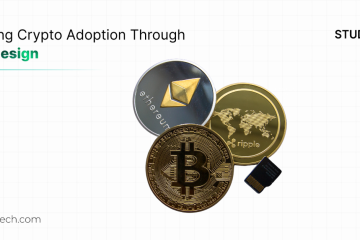Distributed Ledger Technology (DLT) is set to revolutionize the financial sector by offering unprecedented levels of transparency, security, and efficiency. However, as with any disruptive technology, its implementation in trading platforms is fraught with regulatory challenges. Ensuring these platforms comply with existing regulations while fostering innovation is a delicate balancing act.
What are DLT Trading Platforms?
DLT trading platforms utilize distributed ledgers, such as blockchain, to facilitate trading activities. These platforms offer significant benefits, including enhanced transparency, improved security, and increased operational efficiency. Examples include platforms like tZERO and Linq by NASDAQ.
Current Regulatory Environment
The regulatory landscape for traditional trading platforms is well-established, with comprehensive frameworks governing their operations. However, DLT trading platforms often fall into a regulatory gray area, facing unique challenges that existing regulations do not fully address.
Major Regulatory Challenges
1. Compliance with Existing Financial Regulations
Mapping traditional financial regulations to DLT-based platforms is complex. Regulations like the Securities Exchange Act (SEA) in the US and the European Securities and Markets Authority (ESMA) rules are not always directly applicable to DLT technologies, creating compliance challenges. For example, the European Central Bank (ECB) and Bank of Japan have developed DLT prototypes for securities exchange but have yet to establish clear regulatory guidelines.
Each country has its regulatory framework, which can vary significantly. For instance, what is considered compliant in the US under the SEC might not meet the standards set by ESMA in Europe. This divergence complicates cross-border operations and necessitates a deep understanding of multiple regulatory environments. SIX Digital Exchange (SDX) in Switzerland, which received regulatory approval from FINMA, is an example of a DLT platform operating under stringent national regulations
2. Legal Status of Digital Assets: The classification of digital assets varies widely across jurisdictions. Some countries classify them as securities, others as commodities, and some have yet to establish a clear classification. This inconsistency affects how DLT platforms operate and comply with the law. ESMA has been cautious, noting that regulatory action might be premature but necessary as the technology evolves.
3. Regulatory Sandboxes: Some regions have implemented regulatory sandboxes, such as the UK and Singapore, allowing DLT platforms to operate in a controlled environment under relaxed regulations. While beneficial, these sandboxes are temporary and often have limited scope
4. Licensing and Reporting Requirements: Traditional financial institutions are accustomed to specific licensing and reporting requirements. DLT platforms often face difficulties in obtaining necessary licenses and adhering to reporting standards designed for non-digital assets. The FCA’s regulatory sandbox in the UK allows firms to test innovative financial products in a controlled environment, highlighting the regulatory experimentation needed for DLT platforms
5.Enforcement Actions: Recent enforcement actions highlight the importance of compliance. For example, in 2023, the Commodity Futures Trading Commission (CFTC) in the United States charged three DeFi platforms – Opyn, ZeroEx, and Deridex – with offering illegal digital asset derivatives trading without proper registration. These platforms were accused of operating in violation of the Commodity Exchange Act (CEA) by offering leveraged and margined retail commodity transactions to US persons without being registered as a Swap Execution Facility (SEF) or Futures Commission Merchant (FCM).
- Opyn, Inc.: Charged for offering a digital asset derivatives token known as oSQTH through its Opyn Protocol, without registering as a SEF. The CFTC fined Opyn $250,000.
- Deridex, Inc.: Accused of using its Deridex Protocol to offer leveraged derivatives positions considered as swaps under the CEA. Deridex was fined $100,000.
- ZeroEx, Inc.: Faced charges for its Ox Protocol and front-end application, Matcha, which allowed users to trade digital assets, including leveraged tokens. ZeroEx was fined $200,000.
These enforcement actions demonstrate the regulatory scrutiny faced by DLT platforms and underscore the necessity for these platforms to adhere strictly to financial regulations to avoid legal repercussions
Future Outlook
The future of DLT trading platforms lies in the harmonization of global regulatory standards. Efforts are already underway to create a cohesive regulatory framework that can be applied across multiple jurisdictions. This harmonization will reduce the complexity and cost of compliance, making it easier for DLT platforms to operate globally.
Regulators will eventually evolve alongside technological advancements. Creating a supportive environment that ensures security and compliance is crucial. Regulatory frameworks need to be flexible enough to accommodate the rapid changes in technology without compromising on security and user protection. The Sandboxes mentioned above need to lead to a permanent solution.
Building trust in DLT trading platforms hinges on implementing comprehensive security measures and ensuring regulatory compliance. A balanced approach to regulation is essential—one that promotes innovation while safeguarding the integrity and stability of financial markets. By addressing these regulatory challenges head-on, DLT trading platforms can achieve widespread adoption and revolutionize the financial industry. As these platforms continue to evolve, ongoing dialogue between regulators, industry stakeholders, and technologists will be key to navigating the regulatory landscape and fostering a thriving ecosystem for digital assets.


